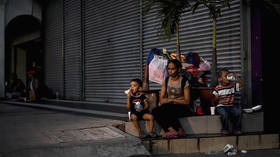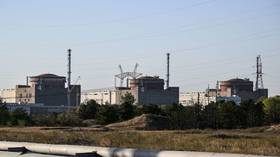Covid threw millions of Southeast Asians into extreme poverty – report

Rising poverty levels, loss of jobs and skills, economic contraction and inequality that could last generations – these are the effects of the Covid-19 pandemic in Southeast Asia, according to the Asian Development Bank (ADB).
Over the two years of the pandemic, the number of people in extreme poverty (those who live on less than $1.90 per day) is estimated to have risen by more than 10 million, the development bank said in a report released last week.
In 2020, 5.4 million people were pushed into extreme poverty and in 2021 - 4.7 million more also dropped into deprivation, the ADB report says, adding that 9.3 million jobs were erased in Southeast Asia last year.
Worst hit by unemployment were women, young people, and micro, small and medium business workers (MSME). The employment gap is projected to remain at 4.1 million jobs in 2022, the report cites figures from the International Labour Organisation.
“The pandemic’s impact on poverty and unemployment will likely persist as inactive workers become de-skilled and poor people’s access to opportunities further deteriorates,” the report says. “When this happens, the deterioration in inequality will transfer across generations”. Inequality is also worsened by a lack of investment in health care, according to ADB.
Southeast Asian economies suffered a deep contraction in 2020 due to low vaccination rates, lockdowns and border closures brought in to curb the coronavirus disease, with some economies more badly affected than others, ADB says.
Before the pandemic, Southeast Asia’s output grew by 4.4% in 2019, but then contracted by about 4% in 2020. The region is a key manufacturing hub for electronics and labor-intensive goods, and the supply shortages — ranging from footwear and textiles from Vietnam and semiconductors from Malaysia — have been acute across the world, especially in the United States, according to the Carnegie Endowment.
Two years after the pandemic started, however, Southeast Asia is slowly beginning to recover, says ADB. It expects growth of 5.1% in 2022 as mass vaccinations help economies to reopen. However, ADB warns that the omicron variant could cut growth by as much as 0.8%.
Another factor that could weaken the outlook for economic recovery is the expected tightening of global interest rates, led by the US Federal Reserve, which introduced a hike this week in an attempt to curb soaring inflation.
One of the major sources of income for the continent, tourism, is expected to start recovering, but the drop in long-haul travel would continue to affect the industry into 2024.
For more stories on economy & finance visit RT's business section














